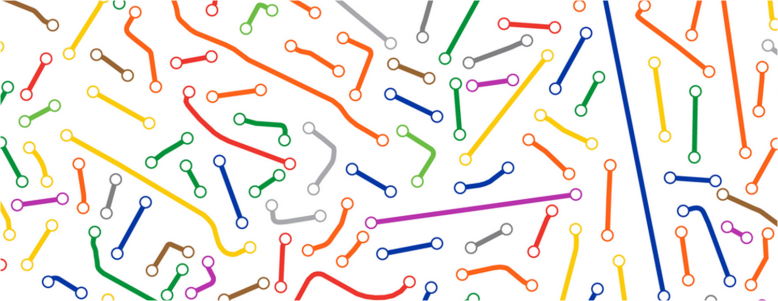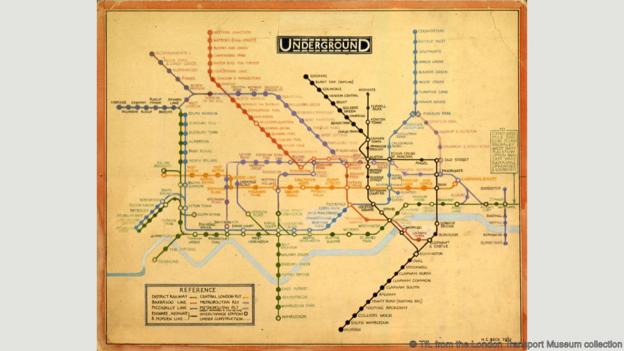
Looking somewhere between an electric circuit diagram and a Mondrian painting, subway – or underground – maps are exemplars of ways to present difficult information in an accessible, visually engaging and, crucially, easy to understand, way.
Londoners may well be familiar with the story of Harry Beck’s famous ‘diagram’ of the city’s underground system in 1931, which presented dozens of lines that both criss crossed a few miles of central London, but also spanned dozens of miles outside the city, stretching out into the suburbs.
Beck’s approach – plotting lines on a grid running vertically, horizontally or at 45 degree angles – meant that it was not possible to tell the distance or precise geographic location of stations at a glance. However, Beck reasoned this was unimportant: what passengers needed to know was how to get from one station to another as efficiently as possible and where to change between lines.

Beck’s design revolutionised the design of underground maps across the world. A traveller from London will be able to read the subway or metro systems in New York or Hong Kong just as easily as if they were travelling between Elephant and Castle and Harrow and Wealdstone back in their home city.
Unsurprisingly then, the design of tube maps is a source of inspiration for artists and designers, as they offer clear examples of how to present complicated data effectively, and creatively.
A fascinating new project from Nicholas Rougeux, the creator of the inspired ‘literary constellations’ suite of visualisations of the opening lines of famous books, has now taken the humble tube map a step further.
In ‘Between Stations’, Rougeux breaks down famous subway systems into the segments between each station and rearranges them to fill a common simple shape: a circle. Each diagram shows every segment in a subway system while maintaining geographic orientation (no segments were rotated). Some segments serve multiple lines, like in in Chicago where the segment between the Washington/Wells and Quincy stops serves the Purple, Pink, Orange, and Brown lines. In these situations, a segment was included or each using that line’s colour.

Explaining his methodology and process behind each of the new maps and animations, Rougeux says: “Arranging the segments this way reveals geographic identities unique to each city. For example, Chicago is a grid-based city from north to south and east to west so its diagram has more mostly horizontal and vertical segments while London’s segments appear more curved because the city’s layout is less ridgid. New York City’s layout has grid-based areas but they’re on an angle from true north, so most of the lines are diagonal.”
Explore the art of subway maps for yourselves. Check out Rougeux’s project.